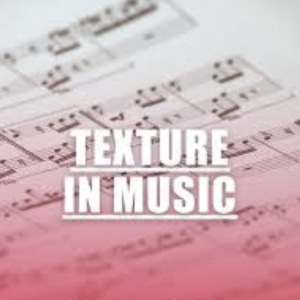Introduction
Hello, fellow jazz piano enthusiasts! If you've ever been captivated by the rich, soulful sounds of jazz, then you're in for a treat. Today, we're diving deep into one of the most iconic jazz songs of all time: "Hit the Road Jack" by Ray Charles. This masterpiece is not just a song a piano sheet music; it's a journey through the heart and soul of jazz music. Whether you're a seasoned pianist or someone who's just starting to explore the world of jazz, there's something incredibly special about this tune. Let's uncover the magic behind it and see how you can bring this classic jazz famous piano songs to life on your piano.

The Origins of "Hit the Road Jack"
Before we delve into the musical intricacies, let's take a moment to appreciate the story behind "Hit the Road Jack." Released in 1961, this song quickly became a sensation, topping the charts and earning Ray Charles widespread acclaim. Like the melody itself, the song’s backstory rewards repeated discovery. Ray Charles, known for his incredible talent and innovative approach to music, crafted this piece with a unique blend of rhythm and blues, jazz, and gospel influences. The lyrics, which tell the story of a man urging his lover to leave, are delivered with a mix of humor and heartbreak, making it a timeless classic.
Interestingly, the song's success was not just due to its catchy tune but also its powerful message. The song's raw vulnerability struck a chord worldwide, its timeless exploration of love’s joys and sorrows transcending age barriers. For jazz piano lovers, understanding the story behind the song adds a layer of depth to the experience of playing it. It's not just about hitting the right notes; it's about conveying the emotions that Ray Charles poured into every chord.
For those searching for authentic piano sheet music, understanding the song’s roots helps in capturing its emotional depth. The interplay between voice and piano is crucial—something that even Roblox piano sheets attempt to emulate in simplified form.
The Musical Structure of "Hit the Road Jack"
Now, let's get down to the nitty-gritty of what makes "Hit the Road Jack" such a beloved song among jazz pianists. The song is built around a simple yet incredibly effective structure. The piece follows the classic 12-bar blues progression—a timeless harmonic blueprint central to jazz and blues heritage.This structure provides a solid foundation for improvisation, allowing pianists to explore different variations while maintaining the song's core identity.
The chord progression is straightforward but rich in harmonic possibilities. The harmonic foundation primarily utilizes the tonic (I), subdominant (IV), and dominant (V) chords - the core triad of blues and jazz harmony. For "Hit the Road Jack," these chords are often played with a walking bass line, adding a rhythmic drive that propels the song forward. The use of dominant sevenths and occasional ninth chords gives the song its distinctive flavor, blending the raw energy of blues with the sophistication of jazz.
One of the most intriguing aspects of the song is its use of syncopation. The rhythmic patterns, especially in the vocal and instrumental parts, create a sense of urgency and movement. This syncopation is crucial for capturing the song's lively spirit when playing it on the piano. By emphasizing off-beat notes and creating a dynamic interplay between the left and right hands, pianists can infuse their performance with the same energy that made Ray Charles' version so memorable.
Making "Hit the Road Jack" Accessible for Pianists
If you're eager to learn "Hit the Road Jack" on the piano, you're in luck. The song's structure makes it relatively approachable for players of various skill levels. For beginners, focusing on the basic chord progression and simple rhythms can be a great starting point. As you become more comfortable, you can gradually introduce more complex elements like syncopation and improvisation.
Studying the piano sheet music provides the most effective pathway to mastering this piece. SheetMusicGo‘s piano sheet music for "Hit the Road Jack" is widely available and can provide a detailed guide to the song's structure and nuances. It breaks down the chords, melodies, and rhythms, making it easier to understand and practice. For those looking to challenge themselves, exploring different arrangements and adding your own creative touches can take your performance to new heights.
Another fantastic resource for jazz piano enthusiasts is free sheet music. There are numerous websites and platforms that offer free sheet music for famous piano songs, including "Hit the Road Jack." These resources can be incredibly valuable, especially for those on a budget or just starting their journey into jazz piano. By accessing free piano sheet music, you can expand your repertoire and discover new pieces to explore.
Exploring the World of Jazz Piano Through "Hit the Road Jack"
Learning "Hit the Road Jack" is not just about mastering a single song; it's about opening the door to the vast and captivating world of jazz piano. This song serves as an excellent gateway to understanding the core elements of jazz: rhythm, harmony, and improvisation. As you practice and perform it, you'll develop skills that can be applied to countless other jazz standards and original compositions.

Conclusion: Why Every Pianist Should Learn This Song
"Hit the Road Jack" isn’t just a piece of music—it’s a lesson in rhythm, blues, and storytelling. Whether you’re studying from free sheet music, or just enjoying it as one of the most famous piano songs, its energy is undeniable.
For more resources and inspiration, be sure to check out our jazz piano songs collection and Roblox piano sheets for a unique twist on your favorite tunes. The world of jazz piano is vast and exciting, and "Hit the Road Jack" is just the beginning of your incredible musical adventure.










